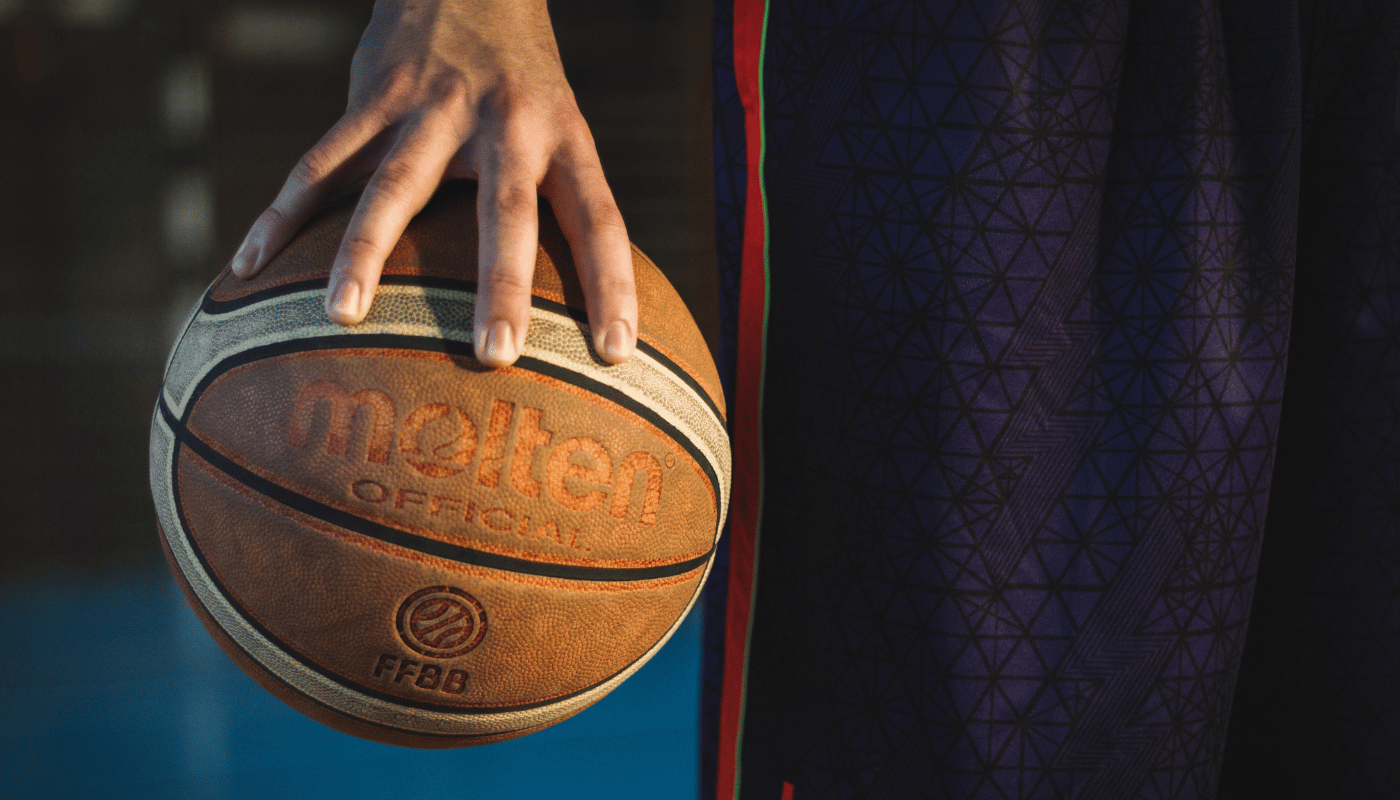Understanding the appropriate size of a boys’ basketball is crucial for young players and their guardians. The right basketball size can greatly influence a player’s skill development, confidence, and enjoyment of the game. With various sizes available, it’s important to know the correct dimensions that match a player’s age, skill level, and personal comfort.
Standard Basketball Sizes
Basketballs come in different sizes to accommodate players of various ages and skill levels. These standard sizes are not random; they have been established and regulated to meet the needs of players at different stages of their basketball journey. Using the correct size ensures that players can develop their skills effectively without being hindered by equipment that is too large or too small.
Common Basketball Sizes for Boys
Here are the most common basketball sizes used for boys, each suited to specific age groups:
Size 27.5 (Junior Size)
- Age Range: 5 to 8 years old
- Circumference: 27.5 inches
- Weight: Approximately 14 ounces
- Characteristics: Smaller and lighter, easier to handle for young children, helps build fundamental skills.
Size 28.5 (Intermediate Size)
- Age Range: 9 to 12 years old
- Circumference: 28.5 inches
- Weight: Approximately 16 ounces
- Characteristics: Slightly larger and heavier, suitable for growing children, aids in transitioning to more advanced play.
Size 29.5 (Regulation Size)
- Age Range: 13 years and older, including high school and collegiate players
- Circumference: 29.5 inches
- Weight: Approximately 22 ounces
- Characteristics: Standard size used in official games, designed for advanced play and competitive environments.
Comparison of Youth and Adult Sizes
There is a noticeable difference between youth and adult basketballs. Youth basketballs are lighter and smaller, making them easier for young players to control. This design helps children develop their handling skills without excessive strain. In contrast, adult basketballs are heavier and larger, requiring more strength and skill to manage effectively.
As players grow and advance in their basketball careers, they must adapt to the changes in ball size. Mastering a smaller ball does not automatically translate to proficiency with a larger one. The materials used in youth basketballs, often lighter and bulkier, can affect handling and dribbling techniques. As teenagers transition to adult sizes, they need to adjust their techniques and strength to maintain control and effectiveness on the court.
Coaches play a vital role in this transition, adjusting training methods to accommodate the increased complexity and physicality of adult basketballs. This adaptation period is essential for players to develop the necessary skills and confidence to compete at higher levels.
Factors Influencing Basketball Size Selection
Selecting the right basketball size involves considering several factors. Understanding these factors helps ensure that young players receive equipment that supports their growth and enhances their performance.
Factors Influencing Basketball Size Selection
- Age of the Player: Younger players need smaller balls, while older players use larger sizes.
- Player’s Height and Hand Size: Taller players with larger hands may prefer slightly larger balls for better grip.
- Skill Level: Beginners may benefit from lighter balls, while advanced players might prefer heavier ones for better control.
- Playing Style: Different positions and styles of play may require specific ball sizes for optimal performance.
- Comfort and Personal Preference: Players should feel comfortable handling the ball, which can vary based on personal preference.
- League Regulations: Official leagues have specific size requirements that must be followed for competition.
- Training Goals: Specific training equipment might differ from game balls to focus on skill development.
Player Age and Development Stage
Age is a primary consideration when choosing a basketball size. It aligns with the developmental stage of the athlete, ensuring that the ball’s size and weight match their physical capabilities. Younger children have different motor skills compared to teenagers, so the basketball must support their specific needs.
As children grow, their coordination and strength improve, allowing them to handle larger balls. This progression helps them develop their skills gradually, building a strong foundation for more advanced play. Teams should assess players’ growth rates to select the appropriate size, ensuring that every player has the right equipment to succeed.
Skill Level and Playing Style
A player’s skill level significantly impacts the ideal basketball size. Novice players may struggle with larger balls due to limited technique and coordination. In contrast, experienced players may find smaller balls insufficient for developing advanced skills. Additionally, different playing styles, such as quick dribbling for guards or physical play for centers, may influence the preferred basketball size.
Creating an environment that acknowledges both skill level and playing style allows players to cultivate their unique talents effectively. This approach helps develop well-rounded players who are equipped to thrive in competitive settings.
Personal Preference and Comfort
Personal preference plays an essential role in selecting the right basketball size. Each player has unique preferences regarding how a ball feels in their hands, its texture, and weight distribution. Comfort levels can greatly influence performance during practices and games.
When players feel confident handling the ball, their performance improves. Some may prefer softer balls for better grip, while others might like firmer balls for a consistent bounce. Ensuring that players are comfortable with their basketball fosters enjoyment and encourages continued participation in the sport.
How to Measure a Basketball
Accurately measuring a basketball is important to ensure it meets the prescribed size standards. Proper measurement helps in selecting the right ball, whether purchasing new equipment or checking existing ones for compliance.
Measurement Techniques
To measure a basketball, follow these simple steps:
- Use a Soft Measuring Tape: A flexible tape measure is ideal for accurately capturing the circumference of the ball.
- Measure the Circumference: Wrap the tape around the widest part of the basketball, ensuring it goes all the way around and overlaps slightly at the starting point.
- Record the Measurement: Note the total length in inches. This measurement determines the size category of the basketball.
- Weigh the Ball: Use a scale to weigh the basketball. This step ensures that the ball’s weight aligns with the standard for its size category.
Understanding Circumference and Weight
Circumference and weight are the two primary factors used to define basketball sizes. Each size category has specific ranges for both measurements, ensuring consistency across different levels of play.
Size 27.5:
- Circumference: Approximately 27.5 inches
- Weight: Around 14 ounces
Size 28.5: - Circumference: Approximately 28.5 inches
- Weight: Around 16 ounces
Size 29.5: - Circumference: Approximately 29.5 inches
- Weight: Around 22 ounces
Measurement Table
| Basketball Size | Age Range | Circumference (inches) | Weight (ounces) |
| Size 27.5 | 5 to 8 years old | 27.5 | 14 |
| Size 28.5 | 9 to 12 years old | 28.5 | 16 |
| Size 29.5 | 13 years and older | 29.5 | 22 |
Benefits of Using the Correct Basketball Size
Choosing the right basketball size offers several benefits that enhance the overall experience for players. These advantages go beyond simple comfort, impacting performance, safety, and enjoyment of the game.
Enhanced Performance on the Court
Using the correct size basketball allows players to perform at their best. A well-fitted ball aligns with a player’s natural movements, making dribbling, shooting, and passing more efficient. This alignment leads to improved accuracy and control, enabling players to execute plays with greater confidence.
For young players, handling a smaller ball helps them develop fundamental skills without frustration. As they progress to larger sizes, their skills naturally advance alongside their equipment, fostering continuous improvement and readiness for more competitive play.
Reduced Risk of Injury
Improperly sized basketballs can increase the risk of injury. Using a ball that is too large or heavy can strain young players’ joints and muscles, leading to discomfort or even injury. A correctly sized ball supports safe movement, reducing the likelihood of accidents during dynamic gameplay.
Ensuring that players use appropriate sizes promotes longevity in their sports careers by preventing overuse injuries and allowing for healthy physical development. Safe practices encourage ongoing participation and dedication to the sport.
Increased Enjoyment of the Game
Enjoyment is a key factor in a player’s engagement with basketball. When players use a ball that feels right, they are more likely to enjoy their time on the court. This enjoyment fosters a positive attitude towards the sport, encouraging regular practice and participation.
Players who feel comfortable with their equipment are more confident in their abilities, leading to a more fulfilling and rewarding basketball experience. Increased enjoyment also strengthens team dynamics, as happy players are more likely to work well together and support each other.
Comparison of Youth and Adult Sizes
Understanding the differences between youth and adult basketball sizes helps players transition smoothly as they grow. Youth basketballs are designed to be lighter and smaller, making them easier for young players to handle. This design helps children develop their skills without being overwhelmed by the physical demands of a larger ball.
In contrast, adult basketballs are heavier and larger, requiring more strength and skill to control. As players move into higher levels of competition, they need to adapt to these changes to maintain their performance. This transition involves adjusting dribbling techniques, shooting mechanics, and overall ball control to match the increased size and weight.
Coaches play a crucial role in this process, providing guidance and training to help players adjust to the new equipment. Proper coaching ensures that players develop the necessary skills to handle adult-sized basketballs effectively, maintaining their competitive edge.
Alternatives to Standard Basketball Sizes
While standard basketball sizes are designed to meet the needs of most players, some situations may call for alternative sizes. These alternatives can offer unique benefits tailored to specific players or training goals.
Custom Basketball Sizing Options
Custom basketballs provide tailored solutions for players with specific needs or preferences. Customization can involve adjusting the ball’s size, weight, grip texture, and other features to better suit an individual player’s requirements. This personalization ensures that players have equipment that matches their unique physical characteristics and playing style.
Players with larger hands or specific grip preferences might benefit from customized textures or weight distributions. Custom basketballs can also incorporate specific design elements that enhance performance, such as improved grip patterns or reinforced stitching for durability.
Training Balls for Skill Development
Training balls are specialized basketballs designed to help players develop specific skills. Unlike standard game balls, training balls can feature unique designs or weights that target particular aspects of a player’s game. For example, some training balls may be slightly heavier to build strength, while others might have different textures to improve grip and handling.
Using training balls allows players to focus on refining their dribbling, passing, and shooting techniques. This focused training can lead to significant improvements in overall performance, helping players reach higher levels of skill and proficiency.
Conclusion
Navigating the world of boys’ basketball sizes reveals an intricate tapestry woven from technical specifications, physical prowess, and emotional connections forged through dedication and passion. Recognizing what size is a boys basketballallows parents, coaches, and players alike to engage meaningfully in the journey known as basketball.
The careful interplay between age, skill level, and personal preference shapes the landscape of choices made for countless aspiring athletes. Ensuring that young players receive appropriately sized basketballs paves the way for improved performance, reduced injury risk, and heightened enjoyment of the game.
Whether focusing on training balls or exploring custom sizing options, knowledge remains the cornerstone empowering stakeholders to curate rich experiences spanning generations and cultivating lifelong fondness for the joys that basketball brings.
Continuously advocate for discernment, and embrace this ongoing adventure, ensuring every young player feels confident and invigorated as they embark upon their journeys in basketball.



